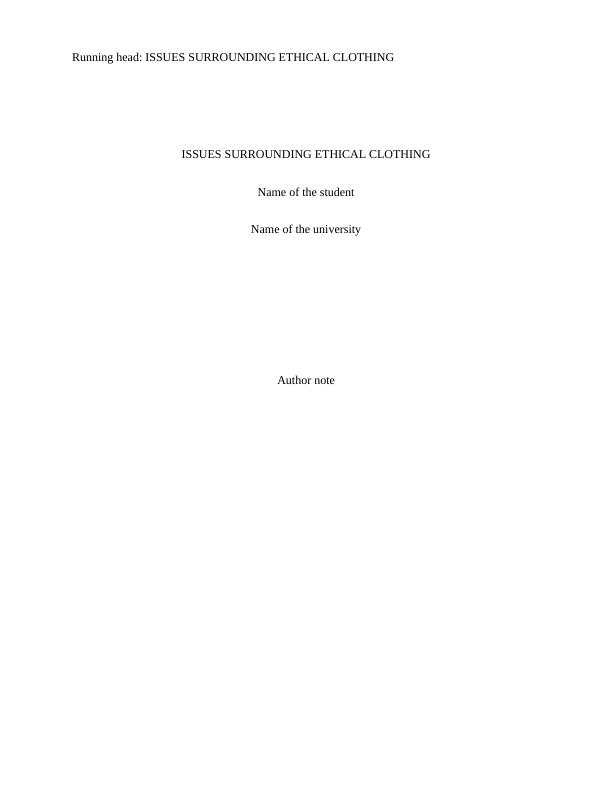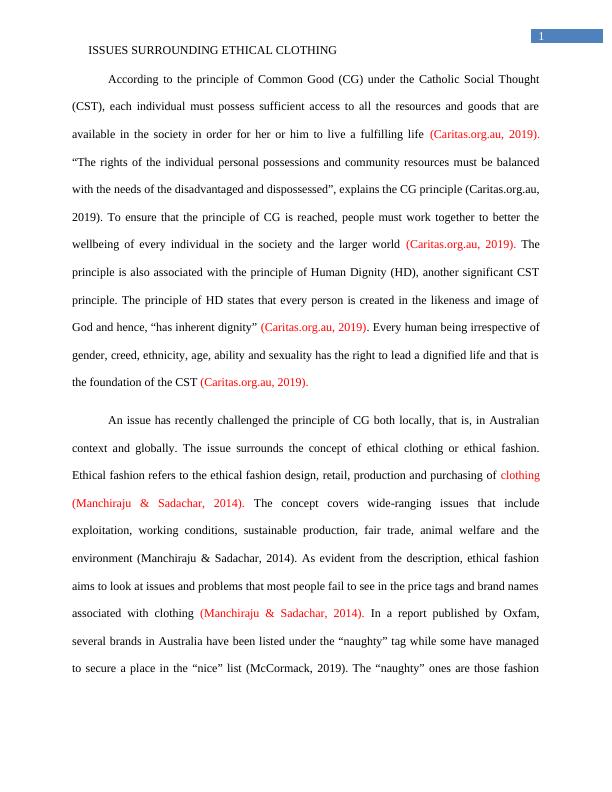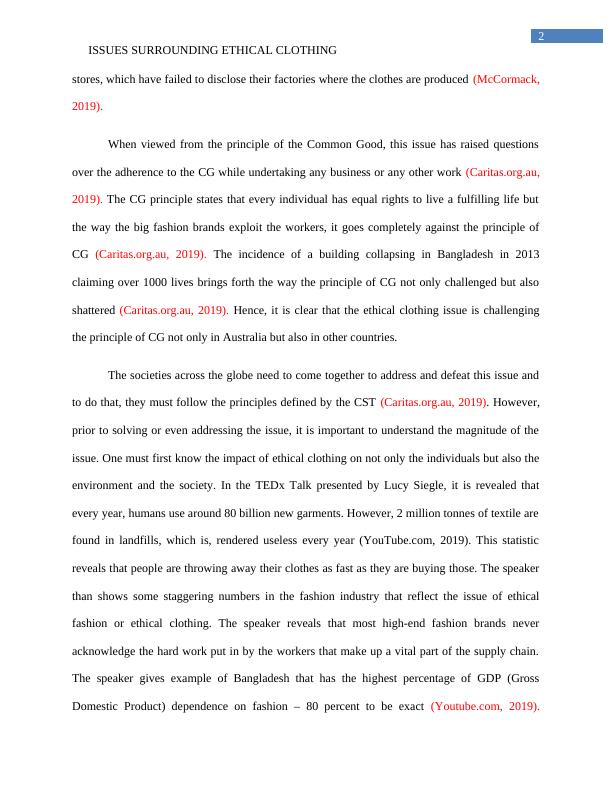Issues Surrounding Ethical Clothing
Investigate the issues surrounding ethical clothing, critique the challenges to the common good locally and globally, propose ways to address the challenge for a more just society, and demonstrate understanding of the Common Good and its relationship to other CST principles.
7 Pages2008 Words272 Views
Added on 2023-04-22
About This Document
This article discusses the issues surrounding ethical clothing and how it challenges the principle of Common Good. It also suggests ways to address the issue through advocacy and community engagement.
Issues Surrounding Ethical Clothing
Investigate the issues surrounding ethical clothing, critique the challenges to the common good locally and globally, propose ways to address the challenge for a more just society, and demonstrate understanding of the Common Good and its relationship to other CST principles.
Added on 2023-04-22
ShareRelated Documents
End of preview
Want to access all the pages? Upload your documents or become a member.
Assignment on Ethical clothing
|8
|1754
|410
Ethical and Sustainable Fashion - PDF
|7
|1506
|185
Principles of Catholic Social Thought Report 2022
|8
|1628
|25
Principles of the Catholic Social Thought Article 2022
|6
|1360
|25
Catholic Social Principles and Self - Community
|9
|2036
|164
Principles of Catholic Social Thought (CST)
|7
|1312
|233



